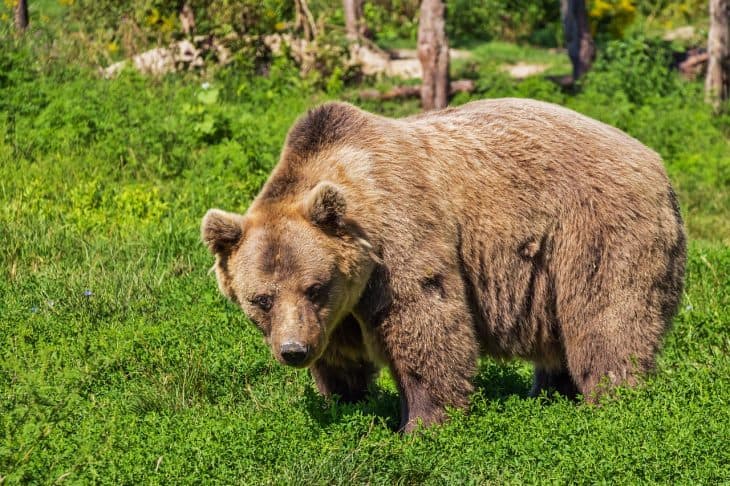
In the wild, bears are definitely a far cry from their cuddly, stuffed counterparts. However, there’s a lot more to them than what popular fiction tends to show. With their capacity to use tools and clever ways to look for food, bears are among the smartest land animals. Bears also have one of the most varied species throughout the world, with many native species developing unique traits based on their habitat. Take a closer look at these curious creatures with these bear facts.
- There are 8 species of bears found all around the world.
- A bear typically lives up to 25 years in the wild and 50 years in captivity.
- Depending on the species, bears can weigh from 27 kg to 700 kg.
- Bears typically stand between 1 to 3 meters tall.
- During winter, bears hibernate up to 100 days.
- The first bears evolved towards the end of the Eocene Epoch, around 38 million years ago.
- Short-faced bears dispersed across North America in the Miocene Epoch, around 13 million years ago.
- The first modern bears evolved between 5.3 to 4.5 million years ago.
- Bears first appeared in Europe between 4 to 3 million years ago.
- Bears reached South America between 2.5 to 1.2 million years ago.
- Polar bears first evolved around 400,000 years ago.
- Cave bears went extinct 24,000 years ago, during the last Ice Age.
- Prehistoric humans hunted bears for meat and fur.
- The Romani people tamed bears as far back as the 12th Century.
- Bear dancing as a form of entertainment goes back to the 16th Century.
- The word bear comes from Old English bera.
- Bears make up the family Ursidae.
- The Greek word for bear, ἄρκτος (arktos), shares the same root as Arctic and Antarctica.
- The constellation Ursa Major means Great Bear in the Latin language.
- Foxes, raccoons, and seals are the bear’s closest relatives.
Bear Facts Infographics
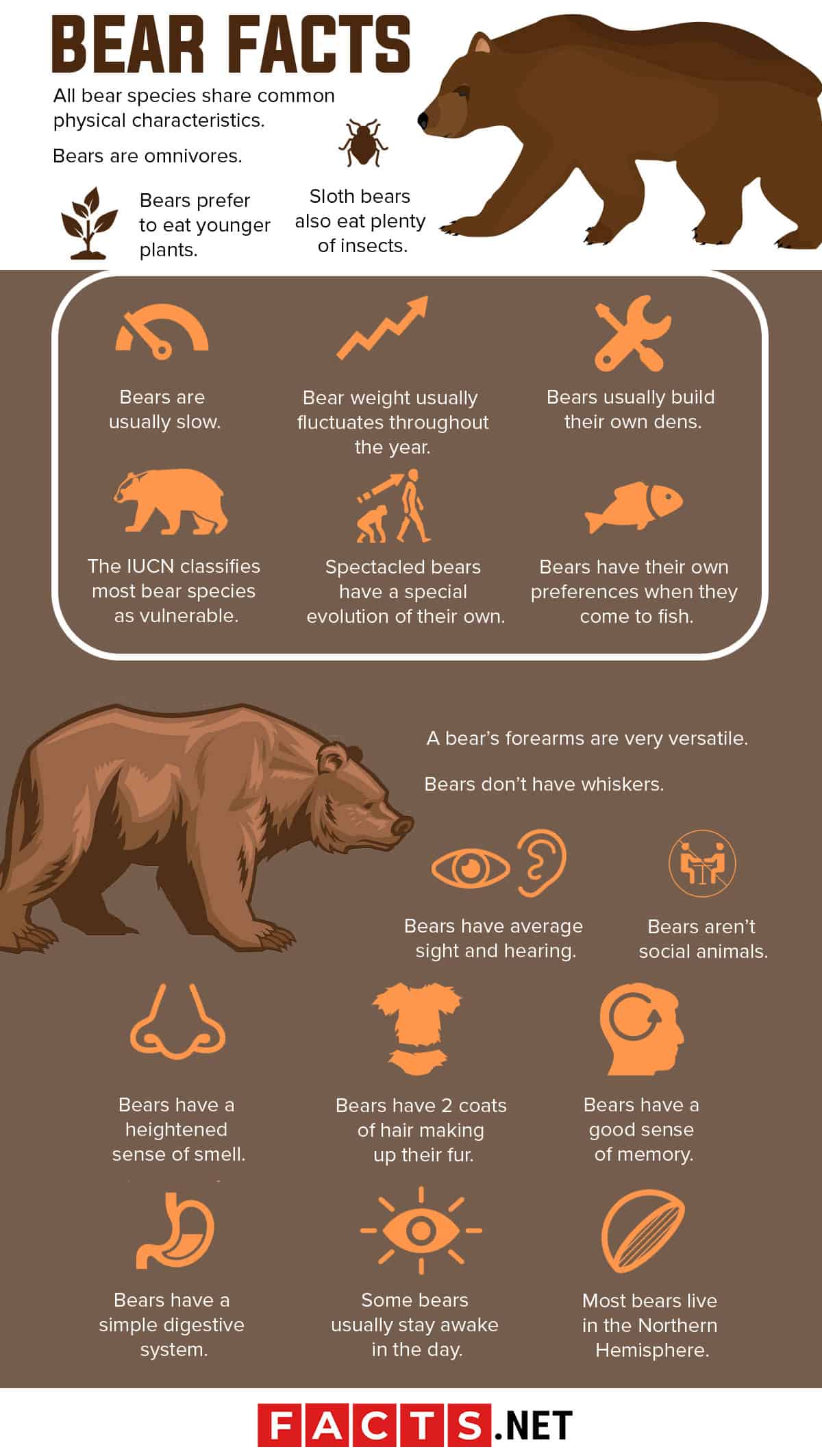
All bear species share common physical characteristics.
Whatever species it may be, all bears evolved with distinctly large bodies and stocky limbs. Bears tend to have small, rounded ears, as well as shaggy coats of fur. They all walk flat-footed, unlike other animals like humans with arced feet. Each bear also has 5 fixed claws on each paw, as well as short, bushy tails.
Bears are omnivores.
However, polar bears favor meat due to the lack of vegetation in the Arctic. On the flip side, panda bears eat mostly plants, specifically bamboo. In comparison, the other 4 bear species have a more balanced diet of plants and meat.
Bears have unique nose prints.
Similar to how humans have unique fingerprints, bears have distinct nose prints. Researchers have found that the patterns and ridges on a bear’s nose are unique to each individual, making it a reliable method for identification. This technique is particularly useful in monitoring and studying bear populations in the wild.
Bears engage in self-medication.
Bears have been observed engaging in self-medication by consuming certain plants or substances for their medicinal properties. For example, some bears seek out naturally occurring mineral-rich soil or rocks, known as “geophagy,” which can help neutralize toxins in their digestive system or provide essential minerals they might lack in their diet.
Bears hold significant cultural and symbolic value in various indigenous cultures around the world.
They are often revered as powerful, spiritual beings and play prominent roles in folklore, mythology, and traditional ceremonies. Bears symbolize strength, wisdom, and connection to the natural world in many indigenous belief systems.
Some bear species have false eyespots.
Some bear species, such as the spectacled bear and the sloth bear, have distinctive markings around their eyes that resemble false eyespots. These markings may serve as a form of camouflage or mimicry, as they can confuse predators or potential threats into thinking the bear is watching them. This adaptation may help deter attacks and provide the bear with a survival advantage.
Bears actually have a playful nature.
Bears are often associated with strength and ferocity, but they also exhibit playful behavior, especially when they are young. Bear cubs engage in play activities such as wrestling, climbing trees, and chasing each other, which not only helps them develop their physical abilities but also strengthens social bonds within their family groups.
Bears prefer to eat younger plants.
In forest habitats, the typical bear diet consists of shoots, saplings, seeds, and nuts. Bears can digest younger plant life much easier than older plants, providing them with more nutrition as well. Definitely one of the more interesting bear facts.
Sloth bears also eat plenty of insects.
Not to be confused with the lazy animals of their namesake, sloth bears actively hunt insects using sticky tongues similar to that of anteaters. Their diet includes ants, termites, as well as other burrowing insects.
They also eat wasps and bees, building a resistance to insect stings to reach the honey and larvae inside hives. Scientists estimate that depending on the time of the year, insects can make up to 90% of a sloth bear’s diet.
Spectacled bears have a special evolution of their own.
No, they didn’t evolve with trendy eyewear. Instead, spectacled bears have jaws and teeth specially equipped to handle bromeliads like pineapples. Spectacled bears can easily split open their tough exteriors to eat the juicy innards.
Scientists estimate that up to 50% of a spectacled bear’s diet comes out of fruit. Now there’s a sweet example of bear facts.
Bears have their own preferences when they come to fish.
Believe it or not, having good taste is one of many bear facts out there. Some bears prefer to eat a certain type of fish, such as grizzly bears’ love for salmon. Much like how you could prefer wings over drumsticks or vice versa, bears also prefer to eat fish brains and eggs.
Bears usually build their own dens.
Bears make their dens using their claws to burrow out enough space for themselves, before using logs to hide their dens. However, bears may also use naturally-occurring caves or crevices as dens instead of building their own.
The IUCN classifies most bear species as vulnerable.
Both the brown bear and the American black bear enjoy the status of Least Concern. However, the IUCN classifies five of the other 6 bear species as Vulnerable. Human activity threatens the polar bear, Asian black bear, sun bear, sloth bear, and spectacled bear’s numbers.
Unfortunately, the panda bear holds the status of Endangered, which makes them the closest to extinction of all bear species.
Bear weight usually fluctuates throughout the year.
This especially occurs for bears in temperate and arctic climates. To endure harsh winters, bears need to store up fat. Even when hibernating, their bodies need nutrition, stored in the form of fat.
As winter approaches in autumn, bears build up fat, causing their body weight to increase. By the time winter ends, the fat gets exhausted, causing the bears’ body weight to drop in spring and summer. However, bears in tropical climates don’t experience this.
Bears are usually slow.
On average, bears walk 1 meter per second, in contrast to the human average of 1.4 meters per second. However, bears can achieve short bursts of speeds up to 40 km per hour.
Though this is still slower than a human’s average running speed of 45 km per hour, bears can reach maximum speed faster. Besides, if the film the Revenant taught us anything, it’s to steer clear of bears and their young.
A bear’s forearms are very versatile.
Bears use their stocky forearms to catch prey, dig their dens, and climb trees. They’re also flexible enough to hold fruit and pick leaves from trees.
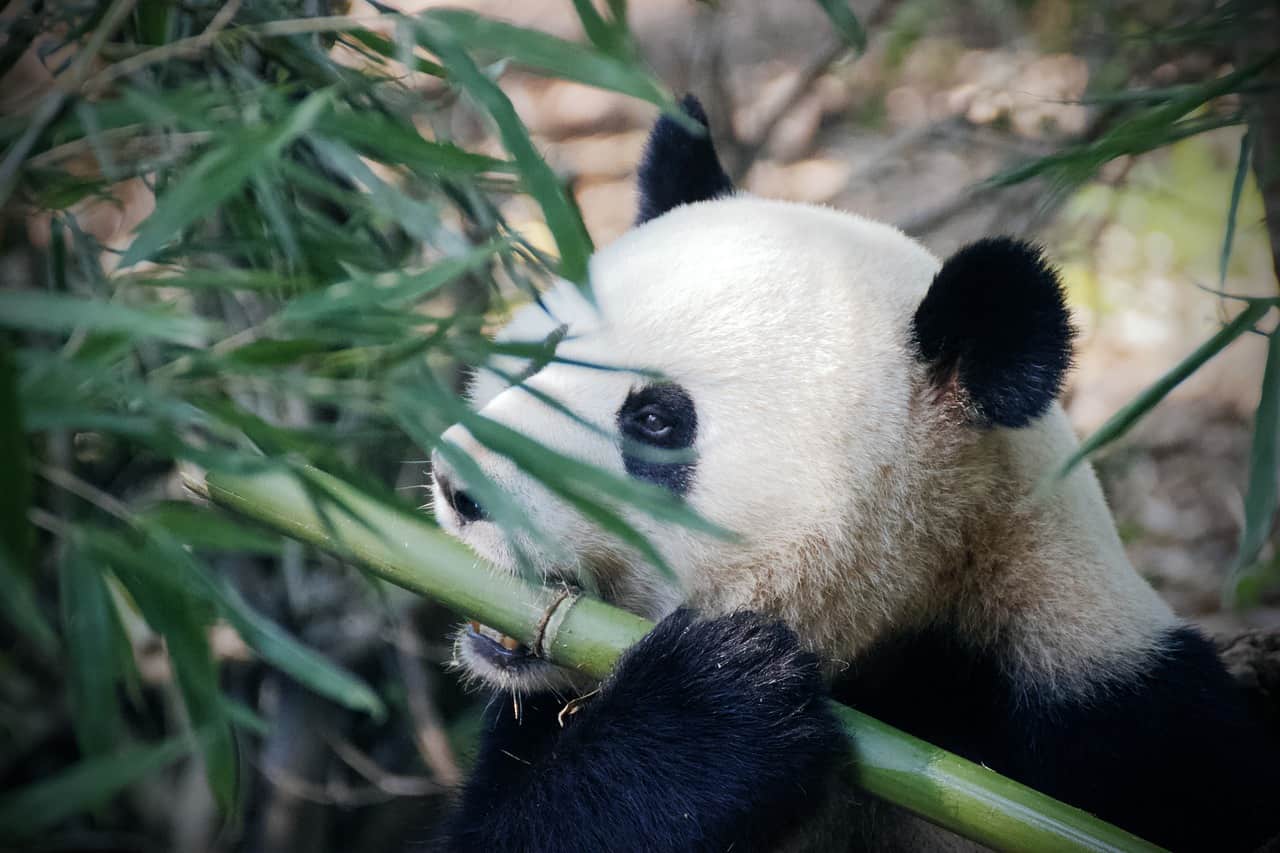
Bears have 2 coats of hair making up their fur.
A bear’s first coat of hair has long strands that protect their skin. The second coat of hair is shorter, packed into dense layers to keep the animal warm in cold environments.
Bears have average sight and hearing.
Unlike other predatory mammals, bears can see color, which helps them find edible fruits and leaves. However, they only have an average range of sight and hearing.
Bears don’t have whiskers.
Some animals like cats and dogs use their whiskers as added sense organs. However, bears don’t have whiskers.
Bears have a heightened sense of smell.
A bear’s sense of smell is usually greater than dogs and other predators. In addition to locating prey and other sources of food, bears use their sense of smell to find other bears. They also use it to signal each other, usually either to warn rivals that they’re entering their territory or to find a mate.
Bears have a good sense of memory.
In particular, bears remember places where they can find plenty of food, and how to get there. This means that even if a bear wanders away, they have a good chance of coming back to where they know there’s plenty of food for them.
Bears have a simple digestive system.
Unlike mammals of similar sizes like the cow, bears only have one stomach. Bear intestines are also very short and undifferentiated, which limits the amount of nutrition they can get from their food.
Because of this, bears must eat a lot of food in a single day to maintain their bodies. Generally, bears have to eat more if their diet is limited to plants. Pandas, for example, spend 12 to 15 hours in a single day eating just to get enough energy and nutrition to stay healthy.
Most bears live in the Northern Hemisphere.
You can find bears in 60 countries across North America, Europe, and Asia. However, the spectacled bear only lives in the Andes Mountains of South America. Sun bears also live across Southeast Asia, while the extinct Atlas bear once lived in North Africa until the late-19th Century.
Some bears usually stay awake in the day.
Of all bear species, the brown bear and the American black bear are the resident morning persons, though they may still hunt at night. All other bear species are nocturnal, though there are still cases where they look for food in the day.
The female sloth bear stays awake in the day when she has cubs to look out for, as it’s easier to find food at day than at night.
Bears aren’t social animals.
Despite what popular fiction suggests, bears prefer to stay alone. Because of this, bears also tend to get extremely territorial, attacking anything that enters their turf.
The only exception to this loner tendency of bears is when a female bear gives birth to cubs. Even then, the mother bear only tolerates her cubs’ presence until they grow into adults themselves. How’s that for relatable bear facts?
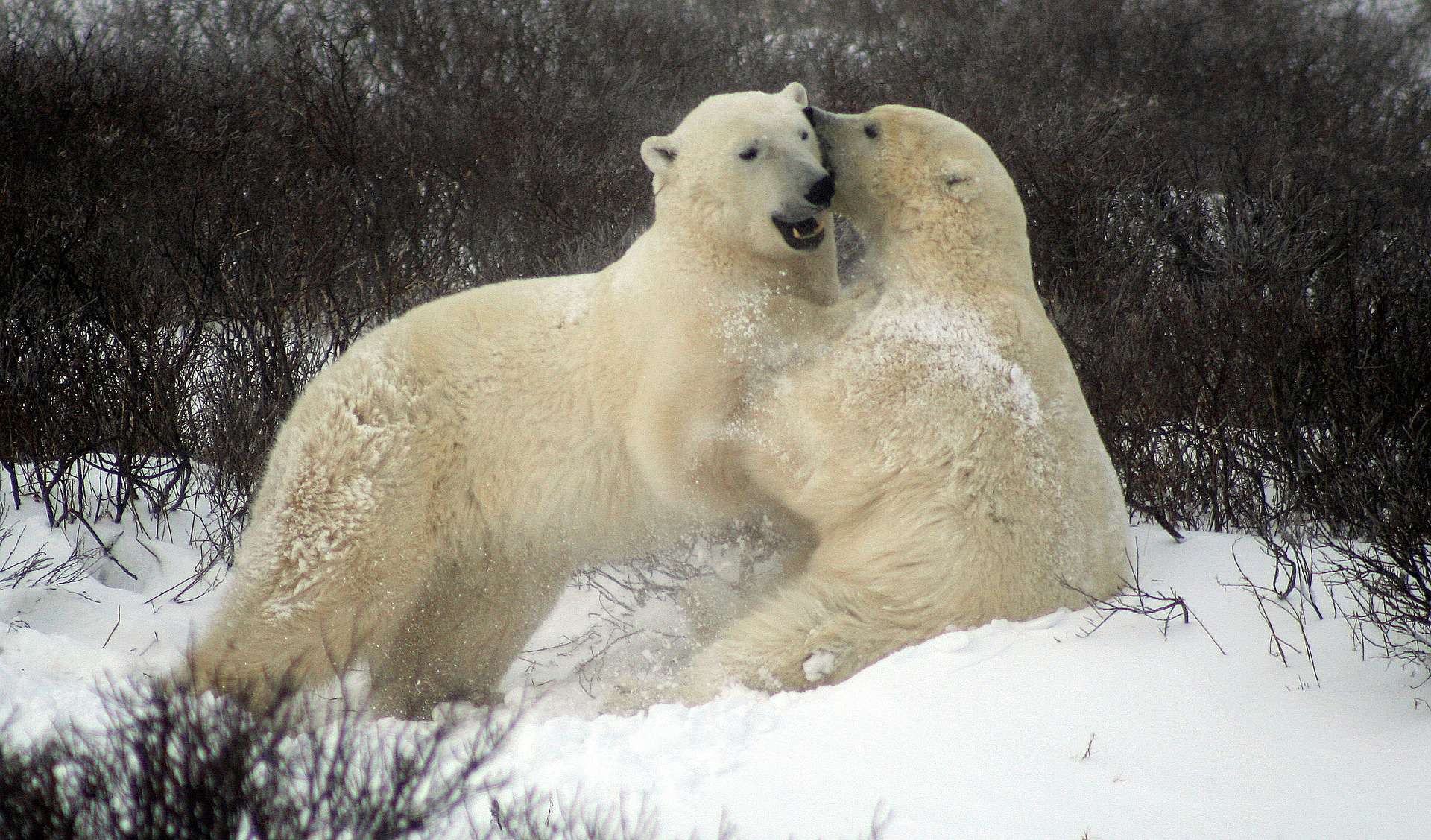
Bears use a variety of sounds for use in communications.
Clicking and grunting are usually signs of a friendly bear. These sounds are usually shared between a mother bear and her cubs or a mating couple. In contrast, huffing, moaning, and shuffling, indicate discomfort for a possibly agitated bear.
Barking is a sign of alarm or excitement, though bears also make them to signal their presence in an area. Popping sounds usually indicated a show of warning, while bellows, growls, and roars are always signs of aggression. Definitely one of the bear facts to keep in mind if you ever encounter one in the wild.
Bear cubs make unique sounds of their own.
Bawling, bleating, and squealing are all signs of distress for bear cubs. In contrast, bear cubs hum when comfortable, such as when they nurse from their mother.
Bears also use nonverbal language.
Bears stand upright on their hind legs as a means of intimidation, as it exaggerates their size and apparent threat. Staring is also a show of aggression, while a stiff-legged approach with heads lowered is a show of non-hostile intent.
Bears show dominance through baring their teeth, as well as extending their necks. In contrast, they submit through lowering their heads while walking sideways or sitting down.
Bears mark their territory.
The most common way for a bear to mark its territory is by rubbing against trees and other plant life to leave their scent behind. Bears may also bite and claw away the bark of a tree to mark territory.
Urinating is another way to mark territory, with panda bears even having unique glands around their anus to leave their unique scents.
Bears have complex mating rituals.
Prospective mates wrestle and even fight each other before mating. Scientists have also discovered that the mating rituals between male and female bears actually cause the latter to ovulate, which makes these bear fights necessary to breed. Talk about tough love.
Bear pregnancies don’t have a set time.
Depending on the species and number of cubs, scientists observed that bear pregnancies typically last between 6 to 9 months. Each female rears up to 4 cubs in a litter.
Since cubs are born blind, they usually stay in the den and do not leave until 2 to 3 months after their birth. These cubs completely depend on their mothers, since male bears do not play a role in raising cubs. Now that’s one for the sadder bear facts.
Adult bears sometimes kill bear cubs.
Bears may target cubs to force a mating ritual, since killing a mother bear’s cubs actually forces her to ovulate. Definitely one of the more disturbing bear facts.
Bears can live for a long time.
On average, bears live for up to 25 years. Although this is short compared to a human’s 80 years, the bear’s life span is quite long compared to other mammals. Bears gain the ability to reproduce between the ages of 3 and 6, and sometimes don’t stop growing until they reach the age of 11.
Bears have no real natural predators.
Vulnerable bear cubs usually get preyed upon by big cats and other predators. However, adult bears don’t usually face any other threat in nature aside from other bears.Only the rise of humanity posed a real threat to them, with hunters and poachers killing bears for trade or meat.

Bears suffer from a variety of parasitic infections.
Bears may be tough predators, but they’re still vulnerable to protists and worms in their organs. Externally, they also suffer from infestations of ticks, lice, and, fleas. Polar bears are less vulnerable to parasites because of their environment but still suffer from internal parasites.
Bears also suffer from some canine diseases.
Bears are prone to the Morbillivirus that causes distemper in dogs. They also suffer from infectious canine hepatitis, especially for black bears living in the wild.
Brown bears are the second biggest bear species.
More known as grizzly bears, they live across the forests and woods of Eurasia and North America. Currently, an estimated 200,000 brown bears remain in the wild.
A brown bear’s color depends on the place where it lives.
In India, for example, brown bears have a reddish tint to their fur, lined with silver tips. Chinese brown bears have a distinctive collar around their necks, spreading down their chests and over their shoulders. The collar itself varies from yellow-brown to white.
Meanwhile, North American brown bears have fur that shifts from dark brown on the lower parts of their bodies to cream or yellow-brown on the upper part.
Brown bears use tools.
You probably won’t see a bear with a Dremel anytime soon, but bears have surprisingly been observed using rocks as tools. Brown bears in particular use a rough rocks to scratch itself with. This alone places bears among the smartest mammals alive today.
Brown bears are sometimes surprisingly social.
Bears may be antisocial for the most part, but salmon season is an exception. During this time, large numbers of brown bears gather together in streams and rivers to feast.
To maximize the food available, brown bears form temporary hierarchies to manage their urges and leave enough food for everyone.
Brown bears tend to get more violent than other bears.
Scientists have observed that adult brown bears are less tolerant of other animals trespassing their territory. Females with cubs have also gotten observed to be just as aggressive as males despite their smaller size, clearly out of a protective instinct over their young.
Brown bear mating season usually takes place in spring and summer.
The standard brown bear mating season occurs from May to July, but this isn’t the same everywhere. As a bear’s habitat goes further north, the mating season changes to adjust to the increasingly-shorter summer and increasingly-longer winter.
Brown bears appear in various stories and folk tales.
The most famous of them all is from Goldilocks and the Three Bears, with the latter usually portrayed as brown bears. There’s also the old German story of Rose Red and Snow White, where a prince appears trapped by an evil sorcerer’s spell in the form of a brown bear. Definitely one of the cooler bear facts.
The brown bear has an association with several nations.
One of those is Russia, which is commonly-associated with brown bears. Similarly, Finland’s national animal is the brown bear, while the coat of arms of the Spanish capital of Madrid features a bear, much like the Swiss city of Bern. In the USA, Montana and Canada’s official state animal is the brown bear.

Polar bears have several different names.
One of those is its scientific name Ursus maritimus which literally translates to its common alternative name of maritime bear. Historically, white bear is another name used the polar bear, as well as nanook from the Inuit word nanuq.
Polar bears spend most of their time on the frozen sea.
In fact, they hunt most of their prey from the edges of sea ice, usually just scooping, clawing, or biting them out of the water. Sometimes, polar bears will just break through thinner ice to reach their prey beneath. The polar bear diet includes fish, seals, dolphins, and smaller whales.
Polar bears sometimes try to hunt walruses.
However, they rarely succeed. Adult walruses are bigger and stronger, with nearly twice a polar bear’s weight at an average of 1000 kg. Their thick skin is also very resistant to a polar bear’s teeth and claws, while a walrus’ tusks go up to 1 meter in length.
Even when they succeed, it’s usually only because a polar bear attacked a younger or injured walrus.
Adult polar bears usually leave leftovers.
Polar bears usually only eat the skin and fatty layer of a seal’s body, leaving the rest to scavengers. These leftovers may then serve younger polar bears and cubs.
Polar bears like to keep clean.
After killing and eating, polar bears wash themselves with water or snow. However, no one has figured ot the exact reason behind this behavior. How’s that for neat bear facts?
Polar bears only live in the Arctic.
However, scientists have confirmed that polar bears have crossed the whole Arctic to travel from one continent to another. These countries include Canada, Denmark, Norway, Russia, and the USA. At present, around 20,000 to 31,000 polar bears live between those countries.
Polar bears sometimes migrate.
The furthest polar bears have been confirmed to reach south is Newfoundland in Canada, but evidence suggests that they might have reached Kuril near Japan.
There are no polar bears in Antarctica.
This is a popular misconception, and one with absolutely no basis in fact. Polar bears live only in the Arctic, and anyone who looks for them in Antarctica is wasting their time.
Legend claims that polar bears cover their noses when on the hunt.
Tall tales claim that this behavior helps polar bears camouflage from prey. The legend is a common one for all Arctic peoples, but despite extensive research by scientists, no observation of polar bears doing so has ever existed.
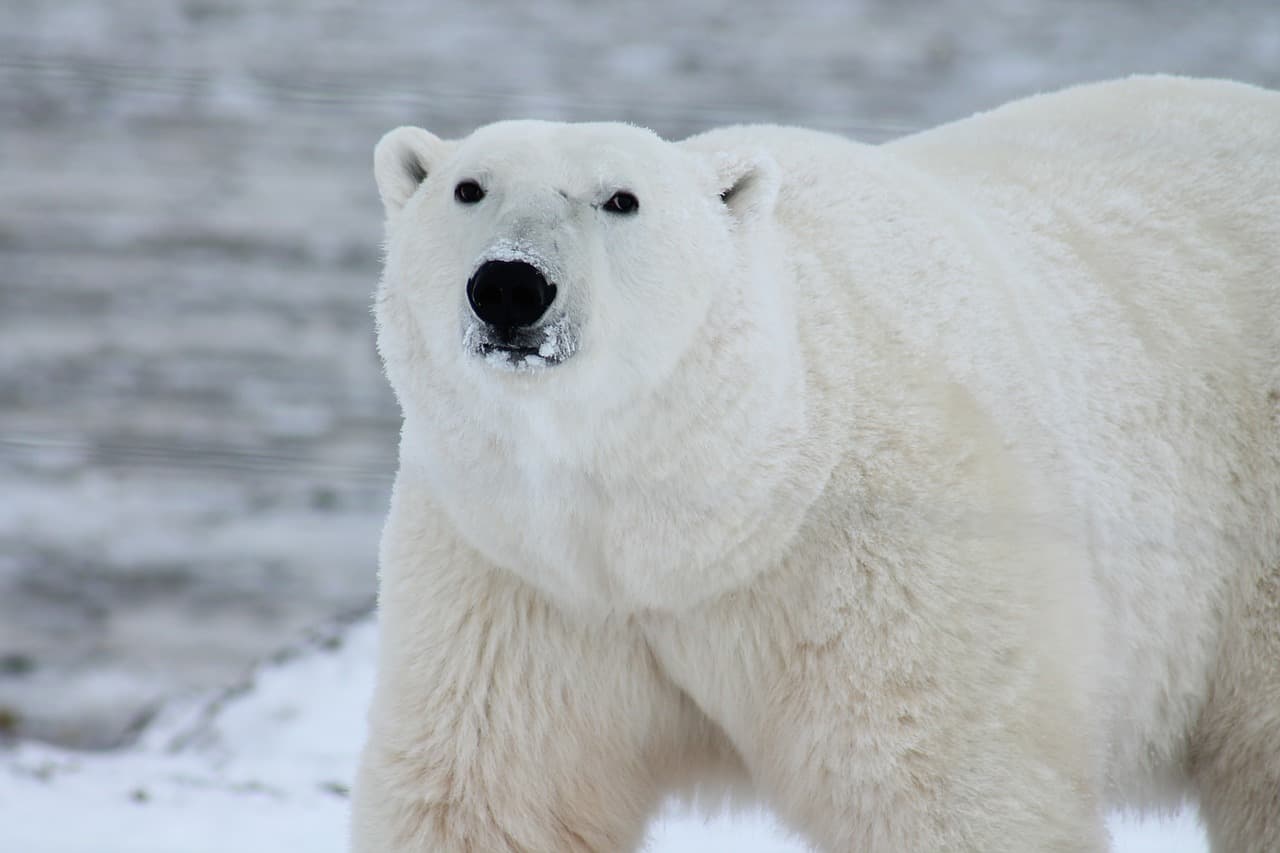
The oldest known polar bear died at the age of 32.
The polar bear’s harsh and remote home environment means scientists aren’t completely certain about their causes of death. Today, the most common cause of death seems to be the result of fights between polar bears.
Injuries caused by fights between polar bears leave them unable to hunt, causing them to starve to death. Definitely one of the sadder bear facts.
Scientists consider polar bears as a keystone species.
This means that polar bears form an important link in the Arctic ecosystem and food chain. Arctic foxes, in particular, depend on carcasses left behind by the polar bears for food.
Polar bears also drive the evolution of Arctic seals, who have white coloration compared to their Antarctic cousins. The latter lacks a predator, allowing them to keep dark colors. Arctic seals, however, evolved a white color as camouflage against polar bears.
Polar bears are long-distance swimmers.
Scientists discovered this through GPS tags measuring the polar bear’s range. The readings showed that on average, polar bears could swim a distance of 155 km. The longest swim ever recorded from a polar bear even reached lengths of 354 km. Scientists also found that polar bears usually swim between 1 to 10 days.
Polar bear cubs swim nearly as well as adults.
Polar bear cubs practice their swimming under their mother’s supervision. That said, the longer the distance, the greater the risk of a cub drowning along the way. Scientists’ observations all indicate that for every 10 cubs that go long-distance swimming with their mothers, only 6 survive the trip.
Polar bears can hold their breath.
Scientists have since observed that polar bears can hold their breath up to 3 minutes when going after underwater prey.
Arctic peoples hunt polar bears with the help of dogs.
These dogs help the hunters locate the polar bears with their sense of smell, since polar bears blend in with the ice. Once they find the polar bear, the hunters then have the dogs distract and confuse the polar bear by barking and running around it. This then gives the hunters the chance to kill the polar bear with arrows or throwing spears.
Arctic peoples have uses for all of a polar bear’s body.
They use its fur to make clothes or shoes. Polar bear meat is edible, though people run the risk of contracting roundworm infection from polar bear meat. Polar bear fat makes for good fuel and is also edible. The carcass’ tendons get used as thread, while its organs are dried and ground up as medicine.
Polar bear teeth have religious or ceremonial uses, while polar bear bones are fashioned into tools among other products.
Polar bear liver is highly poisonous.
Too much of anything is rarely ever good, and the same goes for the Vitamin A in polar bear livers. Because of its rich vitamin A content, ingesting a polar bear liver runs a high risk of vitamin A poisoning.
This results from the polar bear’s fish-heavy diet, giving them plenty of Vitamin A, which is enough to poison the polar bear itself under regular circumstances. However, they avoid this through their ability to store excess Vitamin A in their livers. Thus, Arctic peoples take good care of disposing the liver properly when they prepare polar bear meat.
Polar bear fur isn’t very valuable.
Commercial hunting of polar bears goes as far back as the 14th Century, but it was never really valuable. Even when guns made hunting polar bears much easier, their value stayed low compared to other kinds of fur, even reindeer fur.
Statistics show that most polar bear deaths by human hands are for protective measures. Hunters usually only kill polar bears to keep them away from human homes and livelihoods.
The ban on polar bear hunting began in the 1950s.
The Soviet Union initiated the trend, banning the hunting of polar bears in 1956. Canada followed in 1968, though they merely imposed strict controls on the hunting of polar bears instead of banning it outright. The USA introduced similar regulations in 1971, and eventually, the world adopted global regulation in 1973.
Climate change heavily affects polar bears.
Global warming, in particular, is a major concern, since it causes sea ice to melt. This makes it more difficult for polar bears to hunt prey, and also increases the number of bears drowning. This is because they must now swim longer to find prey and sea ice, risking exhaustion, starvation, and drowning.
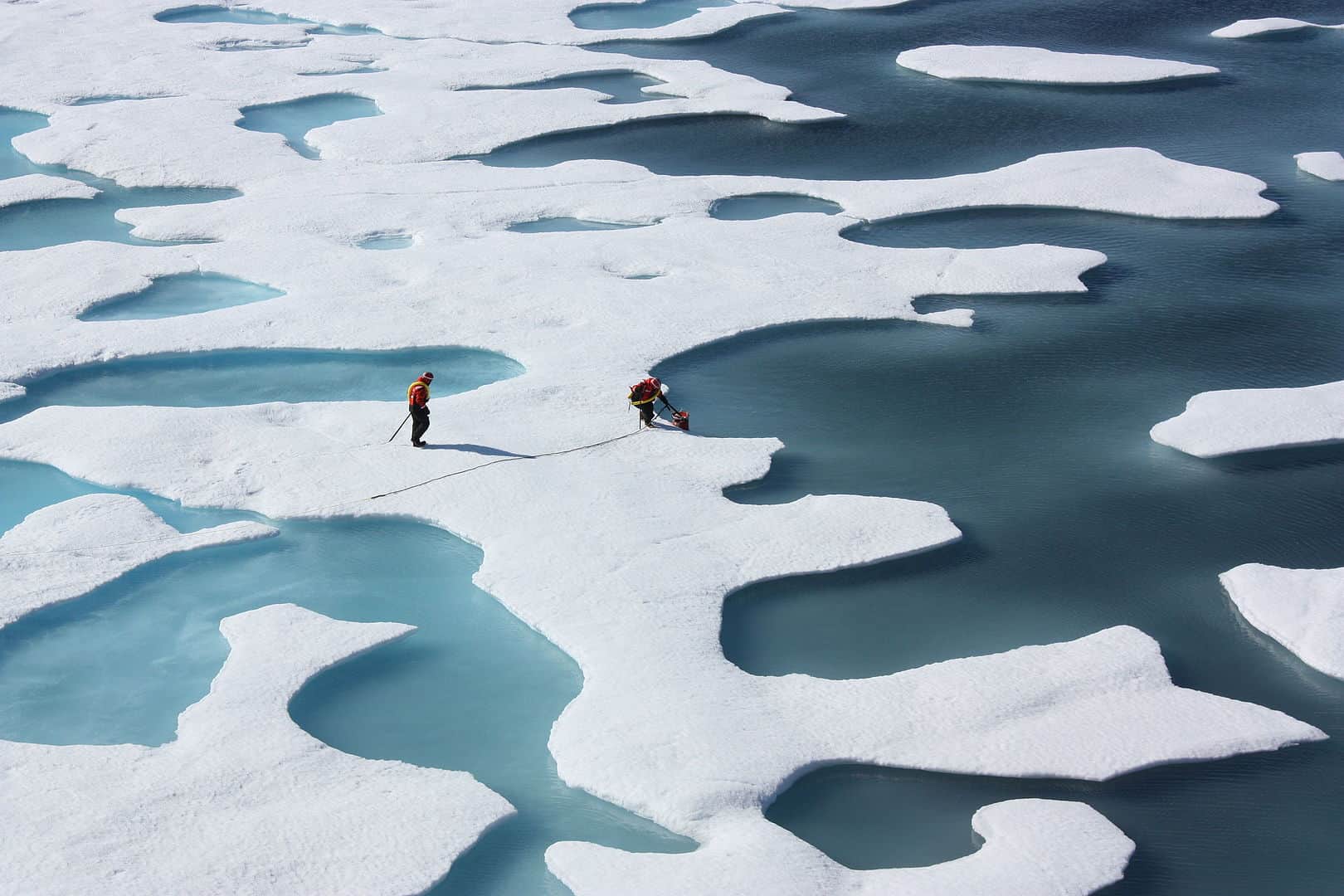
Pollution is another major concern for polar bears.
Pesticides and industrial chemicals contaminate fish, which the polar bears then eat. While each fish also carries only a small amount of contaminant, the sheer amount that polar bears eat causes the contaminants to build. This then causes cancer and other diseases among polar bears from the chemical contamination.
The development of oil resources in the Arctic poses a threat to polar bears.
This threat comes from how such developments inevitably result in oil spills. Oil soaking into polar bear fur actually reduces the fur’s ability to keep heat. In turn, this increases the risk of the animal freezing to death.
Even worse, polar bears tend to lick the oil away, leading them to actually ingest the oil, and risking long-term liver failure.
Asian black bears live all across Asia.
You can find them from India in the west, to the Japanese Home Islands in the east. In the north, they live in the Russian Far East, then south through Korea to Northeast China and Taiwan.
Asian black bears have other names.
Asian black bears’ scientific name changed twice over the years. Once, they had the scientific name of Selenarctos thibetanus, which has since been changed to Ursus thibetanus. Other names for Asian black bears include the Asiatic black bear, moon bear, and even the white-chested bear.
Asian black bears have longer claws on their forelegs than on their legs.
To compare, the claws of their forelegs grow as long as 45 mm, while those on their hind legs only reach up to 36 mm. Both sets of claws have greater size and hooking ability compared to other bear species. Asian black bear likely developed this feature from climbing trees more often compared to other bears.
Asian black bears are extremely resilient.
They may be smaller compared to other bears, but Asian black bears can take and pack a punch like any other. One observed case involved a fight between a tiger and an Asian black bear. Despite losing half its nose and part of its scalp, the Asian black bear still managed to force the tiger to retreat.
Scientists have also observed other cases where Asian black bears actually succeed in stealing a tiger’s kill.
Human development poses a major threat to the Asian black bear.
Specifically, the chopping down of forests and woodlands to make room for residential areas threatens the Asian black bear. The loss of forests and woodlands deprives them of their own places to live and limits their supply of food.
The Asian black bear is heavily hunted across Asia.
Asian black bears are prized by hunters for their paws and other body parts, such as the gallbladder. The Asian black bear’s paws have a reputation for bringing good luck and warding off bad luck.
The bile from the Asian black bear’s gall bladder also has a use in traditional medicine. Some captured Asian black bears are also kept alive, with their bile getting periodically removed over intervals of time. Definitely one of the unfortunate bear facts.
Asian black bear cubs are also a target for hunters.
The captured cubs usually aren’t killed, though. Instead, they’re put up for sale in the exotic pet market, where they’re bought by circuses and rich people for novelty value.
American black bears are the smallest bears in North America.
However, they’re the most widespread species. American black bears are found all the way from Alaska and Canada in the north, to Florida and even Mexico in the south. Scientists estimate that around 1 million American black bears roam Canada and the USA combined.

American black bears tend to avoid brown bears.
Brown bears are both bigger and stronger than American black bears. Thus, it’s only natural for American black bears to steer clear of their bigger relatives. Scientists have even observed the result of confrontations between the 2 species, usually ending in injury or death for American black bears.
The original teddy bear was an American black bear.
Specifically, it was an American black bear that the former US President Teddy Roosevelt found tied to a tree. The president refused to shoot the bear, which inspired entrepreneur Morris Michtom to introduce the brand ‘teddy bear’.
Winnie the Pooh was also inspired by an American black bear.
The color might have you thinking otherwise, but Pooh draws inspiration from the American black bear. English author A.A. Milne came up with the character when his son named a teddy bear after Winnipeg, a female American black bear kept in the London Zoo.
Smokey Bear is usually depicted as an American black bear.
First introduced in 1944, Smokey Bear is the officially-supported mascot of the United States Forest Service. He usually appears in animated documentaries regarding wildlife and camping safety.
American black bear meat is often eaten.
Native American hunters such as the Kutchin regularly hunt American black bears for their meat. However, sport hunters are also known to eat the meat, which they have described as savory and similar to pork. Former US President Teddy Roosevelt is among the historical figures known to have a taste of the American black bear.
The sun bear’s name comes from its distinctive appearance.
Specifically, the sun bear is named for the patch on its chest that’s usually shaped like a crescent, similar to the sun’s coronas. The color of the patch varies between animals, ranging from orange to cream.
Southeast Asian hunters also prize the sun bear for its meat.
Sun bear meat is usually eaten only by indigenous peoples across the region. Other hunters target the animal’s paws for use in magic. Its bile is also a valuable commodity in traditional medicine.
Sloth bears were once commonly seen in India as dancing bears.
Traditionally, sloth bears were domesticated in India to put on performances. However, the government declared the practice illegal in 1972. Despite that, it took decades for the practice to cease, with the last dancing bear only being freed in 2009.
The most famous bear in fiction is a sloth bear.
The title for the most famous sloth bear belongs to Baloo from The Jungle Book. Baloo taught the Law of the Jungle to the protagonist Mowgli, as well as to other young animals in his care.
Bear attacks are actually rare.
Bear attacks may get plenty of attention in the media, due to the brutality and violence. However, they’re not very common in terms of statistics, since bears tend to avoid humans as much as possible.
In fact, only 3 people die from bear attacks in Canada and the USA every year. To compare, 15 people die from dog attacks per year. Definitely one of the bear facts that’ll change your perspective.
Humans actually provoke many bear attacks.
Bear attacks usually happen when humans accidentally enter a bear’s territory, such as when hiking or camping. Outside these circumstances, most bear attacks only occur as self-defense towards hunters. Usually, bears would only attack a human if they come too close.
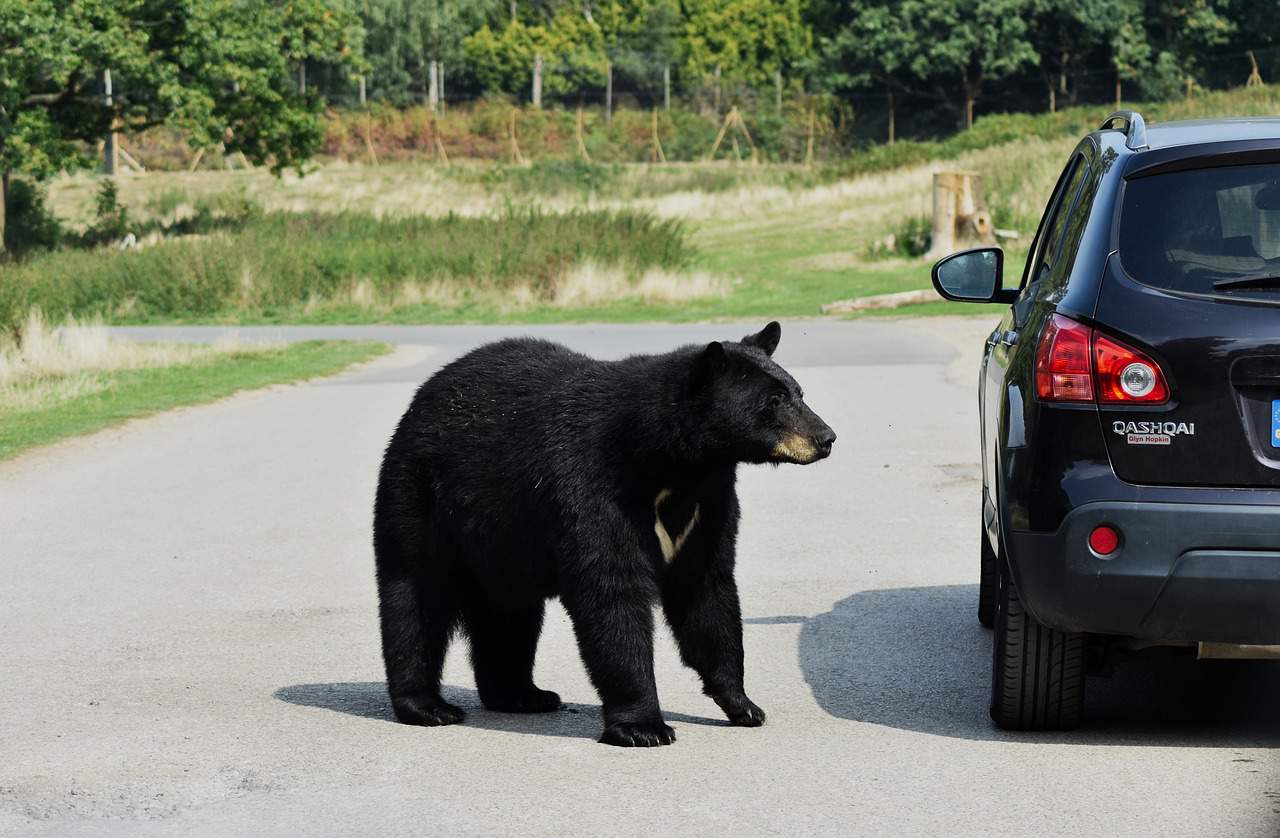
Was this page helpful?
Our commitment to delivering trustworthy and engaging content is at the heart of what we do. Each fact on our site is contributed by real users like you, bringing a wealth of diverse insights and information. To ensure the highest standards of accuracy and reliability, our dedicated editors meticulously review each submission. This process guarantees that the facts we share are not only fascinating but also credible. Trust in our commitment to quality and authenticity as you explore and learn with us.
